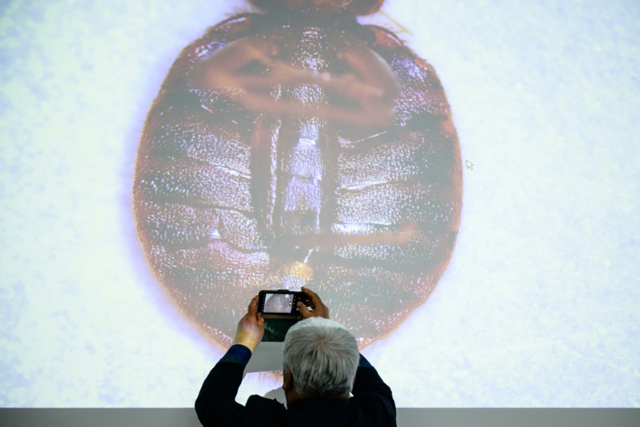You are here
Genes show why bedbugs are tough suckers to kill
By AFP - Feb 04,2016 - Last updated at Feb 04,2016

Photo courtesy of waitbutwhy.com
PARIS — Bedbugs, the notorious bloodthirsty critters which tormented the residents of New York City some years ago, have become genetically wired to resist pesticides, experts said Tuesday.
In a pair of studies published in the science journal Nature Communications, researchers described how bedbug genes have evolved to fight off the most common chemicals used against them.
The teams trawled the DNA of the common bedbug, Cimex lectularius, found in temperate climates in the United States and parts of Europe.
In the first study, scientists at the American Museum of Natural History and Cornell University in New York assembled the first complete genome of the bedbug in all six stages of its life from infancy to adulthood.
The genome is the genetic blueprint of every organism.
They took DNA samples from male and female bedbugs, from preserved and living specimens from as far back as 1973.
They tested the genes before and after each blood feeding.
And what they found will strike fear into the heart of the toughest pest controller.
“Today, a very high percentage of bedbugs have genetic mutations that make them resistant to the insecticides that were commonly used to battle these urban pests,” said Louis Sorkin of the American Museum, one of the study authors.
The troublesome critters have a multitude of genes that render pesticides increasingly ineffective.
Tough to beat
One group of genes, known to be shared by other pests like the house fly, cockroach and mosquito, are designed to inhibit synthetic organic compounds found in the most common pesticides.
Another helps the bug to detoxify, and toughens its skin.
This “makes the control of bedbugs extremely labour intensive”, Sorkin said.
The researchers did discover one bright spot: some genes linked to pesticide resistance are “expressed only after the bedbug first drinks blood”.
“This suggests that bedbugs are likely most vulnerable during the first nymph stage, potentially making it a good target for future insecticides,” the museum said in a statement.
In the second study, researchers at the American universities of Cincinnati and at Virginia Tech found that bedbugs have “cuticles” which can stop poison entering their body and detoxifying enzymes.
Scientists also found that bedbugs use a series of salivary proteins to suck blood repeatedly on the same person without inflicting pain.
Another Virginia Tech study last month said overuse of certain insecticides had led to increased resistance, making them virtually useless.
Bedbugs have proved especially hard to eradicate after potent pesticides like DDT were banned in the United States after World War II.
An air travel boom helped them spread while home heating systems created cosy bedbug homes, and by the late 1990s, they were thriving in New York.
In 2010, an outbreak in New York City saw the bugs invade high-end apartment buildings, hotels, even clothing stores like lingerie outlet Victoria’s Secret.
Related Articles
SEOUL — When news broke about a bedbug outbreak in his native South Korea, 29-year-old blockchain engineer and self-professed insectophobe K
Cockroaches are being born impervious to bug sprays and it’s happening fast.A Purdue University study found that the commonly found German s
Chipping away at the genome of a tiny parasitic bacteria, genetic-sequencing trailblazer J.

















